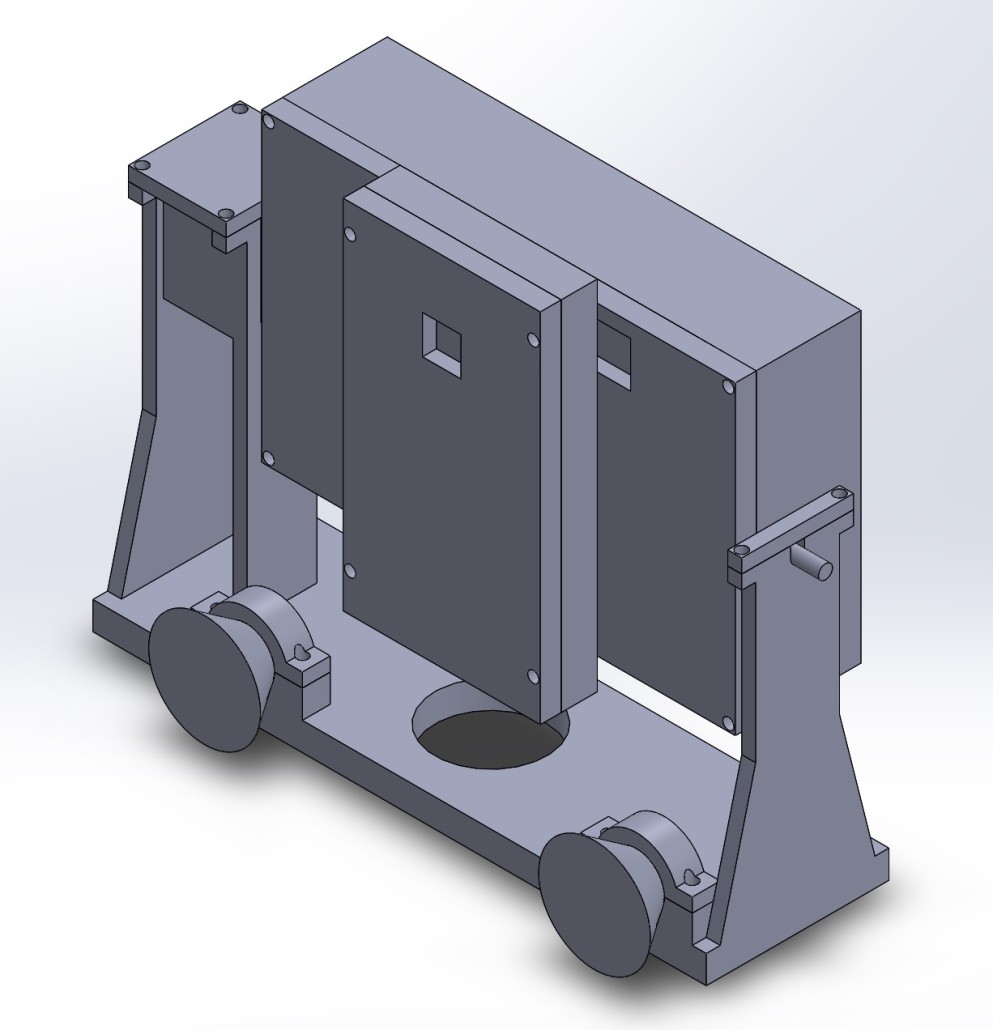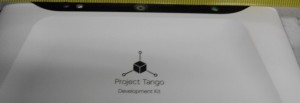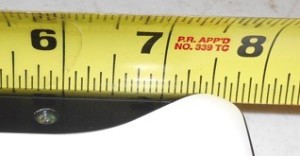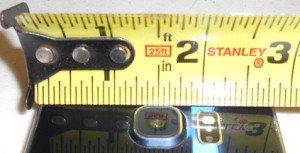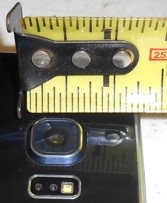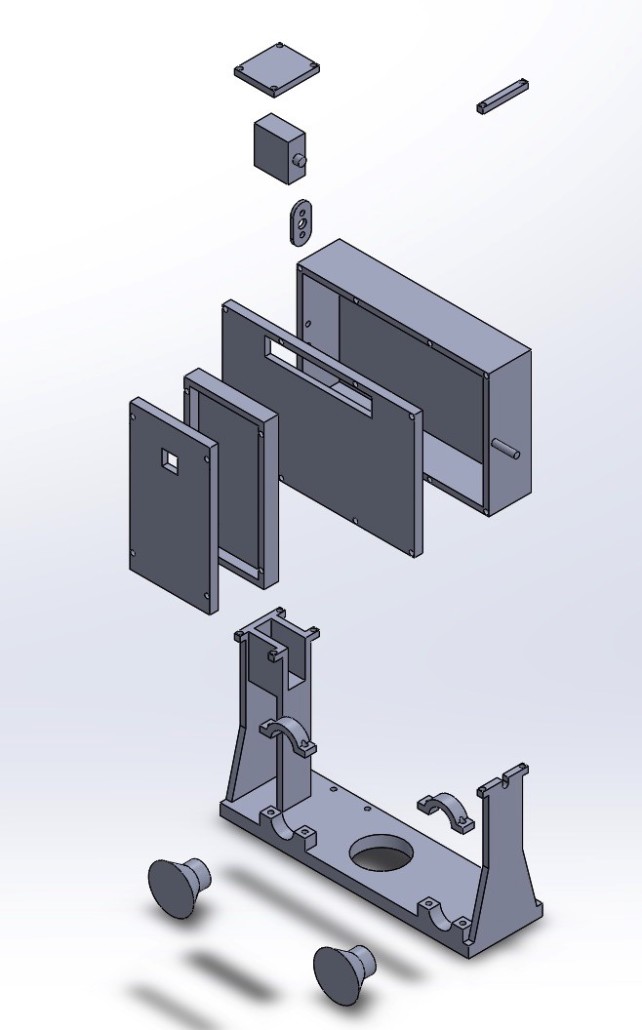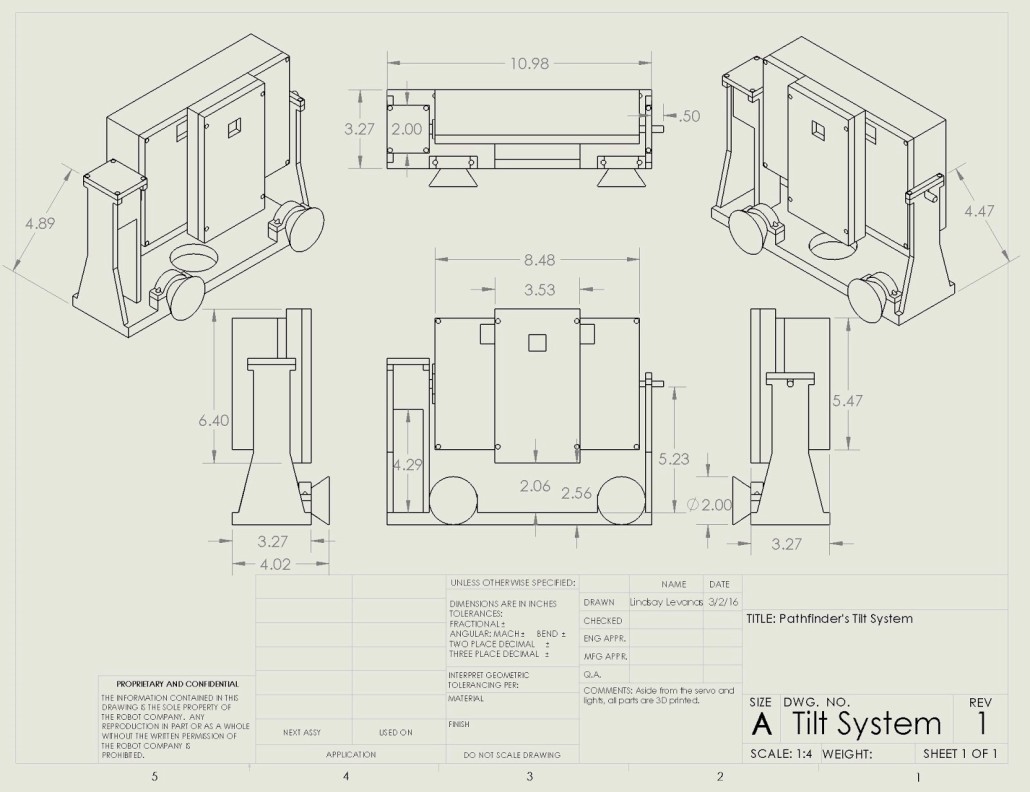Spring 2016 Pathfinder Design and Manufacturing – Tilt System Design
By: Lindsay Levanas (Design and Manufacturing)
Table of Contents
Introduction
In view of the fact that Spring 2016’s Pathfinder will utilize both a Google Tango tablet and a phone as the main viewing system,1 the tilt system will be primarily designed around these two objects. Note that the pan system already in place on the current Pathfinder design will remain, allowing for the tilt system to be added on to it to form a complete pan and tilt system.
Tablet Encasement
As stated in the level 1 requirements, the Google Tango tablet must be encased for it’s own protection.1 To allow the user access to the tablet, a box with lid design was chosen, with the lid having a cut-out window for the tablet’s primary sensors. Measurements for the tablet are as follows:
Height: 4.72 in
Width: 7.73 in
Depth: 1.5 in
Note that the height and width measurements came from the tablet’s specifications.2 The depth however had to be measured as the tablet’s back shape is uniquely slanted as seen below in Figure 1 and 2.
Figure 2
Therefore to allow for the tablet sensors to aim forward, the flat side of the sensors needs to be aligned with the phone and the resultant distance between the two measured. While slightly difficult to accurately document, Figure 3 and 4 attempts to pictorially illustrate this.
Figure 4
Therefore, the inside depth of the tablet box is 1.5in.
Next the placement of the necessary sensors on the tablet must be measured so that the cut-out window in the lid can be properly placed. Using Figure 5, 6 and 7 as a guide, the sensors were found to be enclosed in a rectangle 1.6 inches from the tablet’s side edges and .8 inches from the top.
Figure 7
Lastly, to ensure that the tablet fits into the box, .02 inches was added to both sides of the height, width and depth totals while the thickness of the box was chosen to be .23. Therefore, the tablet box (with lid) measurements are as follows:
Inside Outside
Height: 4.76in 5.22in
Width: 7.77in 8.23in
Depth: 1.54in 2in
Phone Encasement
Similar to the process used above, the box for the phone was designed around the measurements listed in the body specifications.3 Adding the same extra room as the tablet for the phone to fit and the same box thickness, the dimensions become as follows:
Inside Outside
Height: 5.69in 6.15in
Width: 2.82in 3.28in
Depth: 0.31in .77in
Again following the same procedure for the lid cut-out as was done for the tablet, the camera hole was found to be a .68in square centered 1.41 inches down from the center top of the lid. Figure 8 and 9 were used for reference.
Figure 9
Attaching the tablet and phone
To line up the phone’s camera with the tablet’s sensors, the two encasement boxes share circular cut-outs for screws to hold them together. For the tablet box, this means 2 screw holes on the top and bottom edge centered 1.645 inches from the top center of the box. For the phone box, this means 2 screw holes on the sides centered .5 inches from the top and 2 screw holes on the sides centered 5.725 inches from the top. When all aligned, the phone’s camera and the tablet’s sensors will now be on the same level.
Swivel point
For the phone and tablet box (hereafter referred to as tilt box) to be able to tilt, the midpoint of the system needs to be found. Taking into account the height of the tablet box and the width of the tilt box, a cylindrical extrusion is added to one side of the tablet box 1.64 inches deep from the back. Mirroring this, the other side will contain two holes of equal distance apart from the same center point so that a servo can be attached.
Tilt base
To hold both the servo and tilt box, a base is needed to connect the two sides. The width of this base will vary depending on the servo used, but the height is based on the height of the pan servo already attached to the current Pathfinder, as the tilt system will be structured around it. Considering a sample servo of width 1.75 inches, the base of the tilt system should be at least 10.48in (the width of the servo + the width of the tablet box). The height should be at least 2.125 inches from base to phone box in order to clear the pan servo.
Finished Product
Source Material
- Spring 2016 Pathfinder Preliminary Design Documentation, Level 1 Requirement, 2/19/16 http://arxterra.com/spring-2016-pathfinder-preliminary-design-documentation/
- Project Tango Development Kit User Guide, Technical specifications, 8/6/2015 https://developers.google.com/project-tango/hardware/tablet#technical_specifications
- Samsung Galaxy S6 – Full phone specifications, Body, http://www.gsmarena.com/samsung_galaxy_s6-6849.php

